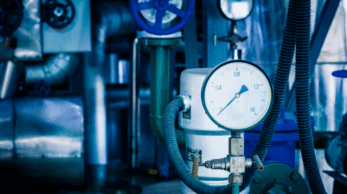For airport and port infrastructure managers, there is no shortage of maintenance challenges. Large-scale infrastructures, complex technical equipment and stringent safety and availability requirements call for rigor and coordination. That’s why it’s essential to be well-prepared and far-sighted when it comes to maintenance. A goal that can only be achieved with a tool like CMMS.
Unique challenges in ports and airports
Transport infrastructure operates under specific constraints, such as:
Maintaining massive infrastructure: The sector encompasses runways, complex rail networks, docking berths, and large buildings accommodating passengers and cargo. The upkeep of such colossal infrastructure is resource- and cost-intensive.
Monitoring strategic and technical equipment: Critical assets include radars, air traffic control towers, boarding bridges, and forklifts. Constant monitoring is necessary to prevent service interruptions.
Regulatory compliance: With thousands of daily users, safety is paramount in transportation. Managers must ensure compliance with rigorous standards while also addressing significant environmental challenges dictated by strict regulations.
Maximizing infrastructure availability: Prolonged downtime affects passenger and cargo flow, creating ripple effects. Continuous maintenance operations are essential to minimize disruptions while maintaining the hub’s functionality.
Managing diverse suppliers and manufacturers: The wide range of equipment from various providers complicates maintenance management. Each brand requires specific parts, procedures, and training.
Maintenance strategies in the transportation sector
To address these challenges, transport hubs typically combine multiple industrial maintenance strategies. The objective is to maximize equipment availability while keeping costs under control, evaluated based on asset criticality.
Systematic preventive maintenance
With preventive maintenance, periodic interventions are scheduled based on usage or elapsed time, following manufacturers’ recommendations. This approach minimizes the risk of severe breakdowns and unexpected outages.
Predictive maintenance
Using sensors and monitoring systems, real-time evaluations of critical equipment detect potential failures early. Predictive analytics models enable timely interventions, especially suited for strategic and costly assets.
Condition-based maintenance
Regular inspections assess the state of transportation equipment, triggering corrective actions if needed. This approach is typically applied to less critical assets or where predictive maintenance is not cost-effective.
Corrective maintenance
While the goal is to minimize corrective or reactive maintenance, it remains necessary for sudden failures. Rapid response processes must be in place to limit service interruptions.
The role of robust solutions and their implementation in the sector
For transport hub managers, the greatest challenge is generally to orchestrate these different large-scale maintenance strategies effectively, and also to plan them over time. To manage operations effectively over the medium term, and maintain perfect control over schedules, the help of one or more software solutions often proves indispensable. The most commonly adopted by the transport industry is CMMS software, which enables maintenance to be coordinated without complicating processes.
The main benefit of maintenance software is its ability to centralize purchasing and inventory data, two essential components for smooth operations. CMMS also provides essential visibility over technician schedules and intervention slots, enabling hub managers to anticipate their maintenance needs over several months. In the field, mobile applications provide rapid access to all asset information and work orders. As a result, maintenance operations run more smoothly and traffic disruptions are kept to a minimum.
Finally, CMMS activity reports provide a real-time overview of equipment fleets. These analyses make it possible to put a real figure on the proportion of predictive or preventive maintenance, and to take appropriate measures to improve it over time.
It should be noted that CMMS is not the only tool available to managers. In combination with maintenance software, several innovations enable more precise monitoring of critical transport equipment, such as IoT, AI and augmented reality. Thanks to them, managers can not only act quickly on equipment, but also better anticipate maintenance needs, one of the keys to smoother hub operation.
Case study: Tahiti’s directorate of equipment and DimoMaint
The experience of Tahiti’s Directorate of Equipment (DEQ) illustrates the impact of deploying a CMMS to optimize public infrastructure management on a large scale.
Responsible for managing road, maritime, and airport infrastructure across Tahiti and surrounding islands, the DEQ needed a solution to coordinate maintenance and operations across remote sites. The chosen solution was DimoMaint MX. After a few months of use, the results included:
- Improved Visibility: Centralization of all assets, inventory, and interventions into a single reference point.
- Enhanced Purchasing Anticipation: The diverse needs of the DEQ’s equipment park are now better understood and planned for.
- Increased Preventive Maintenance: A higher share of preventive maintenance without sacrificing daily usability.
- Rapid Deployment: The DEQ quickly adopted the solution, effectively addressing its challenges.
With DIMO’s CMMS, the DEQ improved its understanding of site maintenance while orchestrating it seamlessly, ensuring smooth daily operations.
Transport sector managers equipped with comprehensive and mobile CMMS solutions can rapidly optimize their maintenance strategies. While CMMS addresses the sector’s common needs, it also adapts to specific requirements, ensuring continuous improvement in maintenance practices regardless of the organization’s profile.
Read the full testimonial from Tahiti’s Directorate of Equipment (DEQ).





